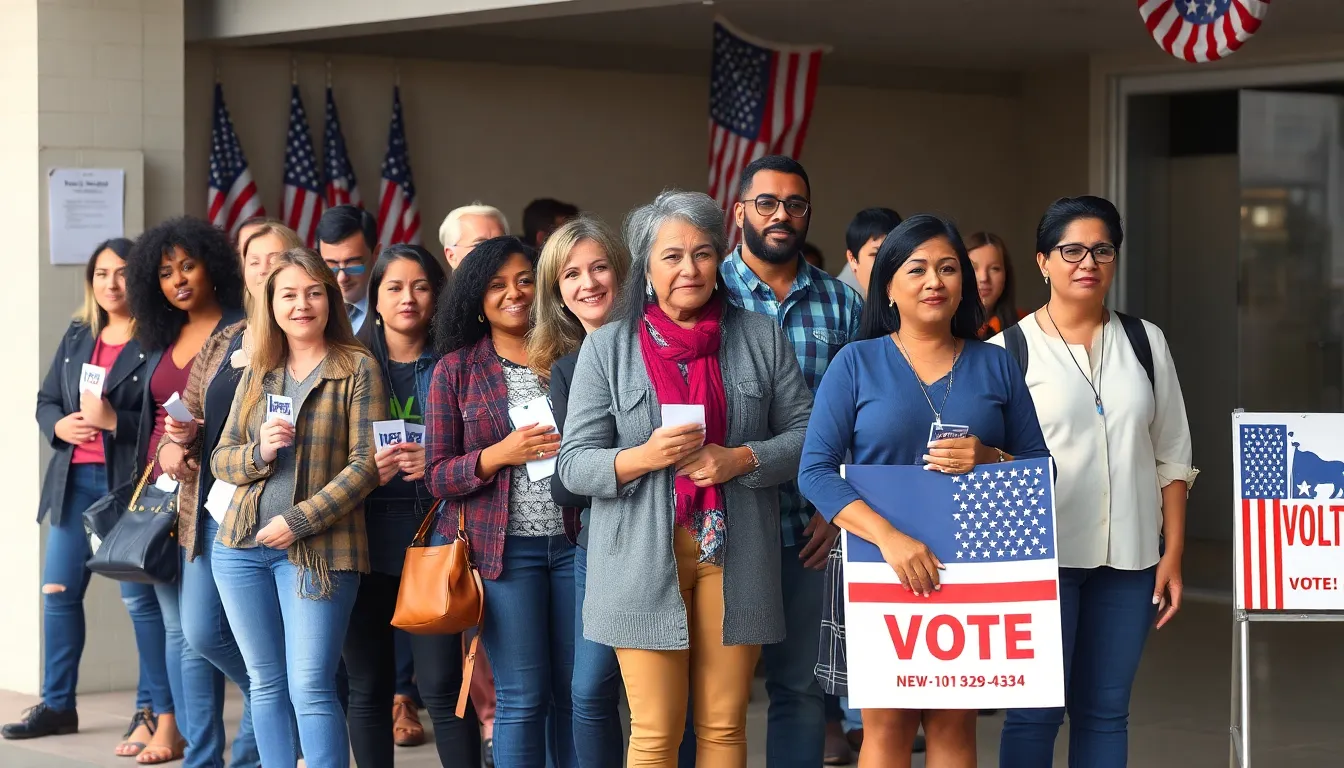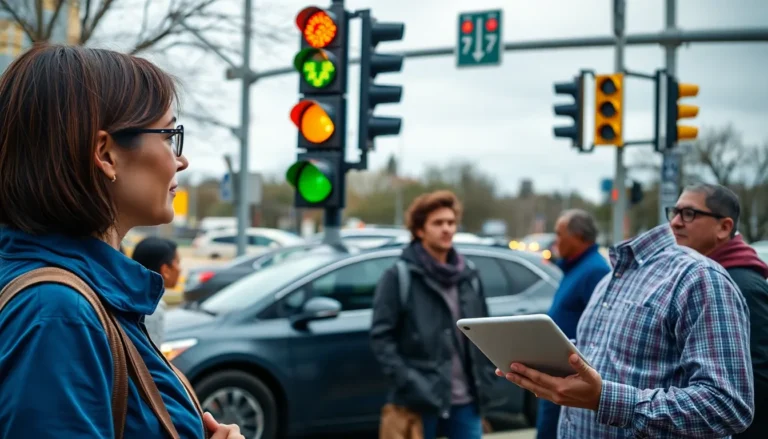Table of Contents
ToggleAs the political landscape heats up, anticipation builds for the next general election in 2024. Citizens across the nation are eager to know when they’ll head to the polls to make their voices heard. With key issues at stake and candidates gearing up for campaigns, the timing of this election is crucial for shaping the future.
The general election is set for November 5, 2024, but the lead-up is already buzzing with activity. Voter registration deadlines, primary elections, and debates will all play significant roles in determining the political climate as the date approaches. Understanding the timeline and what’s at stake can empower voters to engage meaningfully in the democratic process.
Overview of General Elections
General elections serve as a vital mechanism for citizens to influence government leadership and policy. Scheduled for November 5, 2024, this election will determine key positions, including President, Vice President, and members of Congress.
Voter registration deadlines vary by state, with many concluding weeks before the election date. Primary elections, occurring earlier in 2024, will help finalize candidates for each party and shape campaign strategies.
Engagement in debates and public forums increases voter awareness of critical issues such as the economy, healthcare, and education. Candidates’ stances on these matters may significantly affect voter turnout.
Understanding the timeline and key dates is essential for informed participation in the electoral process. Voter mobilization efforts will likely intensify as election day approaches, highlighting the importance of civic involvement.
Timeline for the Next General Election 2024

The timeline for the next general election comprises crucial dates that citizens must remember as they prepare for participation in democracy. This section outlines the key dates and processes leading up to and on election day.
Key Dates to Remember
| Event | Date |
|---|---|
| Voter registration deadlines | Varies by state |
| Primaries | February – June 2024 |
| General election | November 5, 2024 |
| Absentee ballot requests | Varies by state |
| Early voting period | Varies by state |
Voter registration deadlines typically fall weeks before the election date, varying by state; some states allow same-day registration. Primary elections set for February to June 2024 will finalize candidates for each party. Citizens should stay informed about absentee ballot request dates, essential for those unable to vote in person on election day. Early voting periods, offered in many states, provide another opportunity for voters to cast their votes before November 5.
Election Day Process
Election day on November 5, 2024, initiates an extensive process for voters. Voters will check their registration status online, know their polling place, and understand the hours of operation. Voters should bring necessary identification, varying by state, to ensure a smooth voting experience. Upon arrival, citizens will receive a ballot, either paper or electronic, where they will select their preferred candidates. After voting, they will submit their ballot as instructed, ensuring their voice is counted in the democratic process. Monitoring results after polls close will provide updates, with full results typically available within days following the election.
Important Factors Influencing the 2024 Election
Several key factors will shape the 2024 general election landscape, influencing voter behavior and party strategies.
Voter Turnout Predictions
Voter turnout predictions for the 2024 election estimate between 55% and 60% of eligible voters participating, a rate similar to that of previous presidential elections. Engagement factors include issues raised in campaigns, demographic shifts, and state laws affecting voting. Younger voters, particularly those aged 18 to 29, are expected to play a crucial role, as their increasing political engagement and activism may drive higher participation rates. Additionally, accessibility measures like early voting and mail-in ballots will likely influence overall turnout, specifically in closely contested battleground states.
Major Political Parties and Their Strategies
Major political parties are adjusting strategies as they gear up for the election. The Democratic Party focuses on emphasizing social justice, climate change, and healthcare, aiming to mobilize diverse voter bases. In contrast, the Republican Party highlights economic recovery, national security, and immigration control, targeting working-class voters and rural populations. Both parties will utilize data analytics to optimize campaign outreach and tailor messaging to resonant voter demographics. The primaries and debates provide platforms for candidates to solidify their positions and build momentum, shaping each party’s final strategy leading to November 5.
Role of Technology in the 2024 Election
Technology plays a critical role in shaping the dynamics of the 2024 election. Various digital platforms enhance voter engagement, streamline campaign strategies, and improve the overall electoral process.
Online Voter Registration
Online voter registration systems facilitate the registration process for millions. Over 40 states in the U.S. allow voters to register online, increasing accessibility and participation. These systems reduce administrative errors and improve processing times, allowing states to keep their voter rolls current and accurate.
Social Media Campaigns
Social media emerges as a key tool for political campaigns. Campaigns harness platforms like Facebook, Twitter, and Instagram to communicate with constituents, share messages, and mobilize supporters. For instance, targeted advertisements can reach specific demographics based on user data. Campaigns are leveraging algorithms to maximize engagement, ensuring that important issues resonate with potential voters.
Data Analytics and Targeting
Data analytics provides insights into voter behavior and preferences. Campaigns utilize this information to refine their messaging and outreach strategies. By analyzing data from previous elections, parties can tailor their approaches to particular voter segments, ensuring that communications address the unique concerns of diverse groups.
Virtual Events and Town Halls
Virtual events and town halls facilitate direct communication between candidates and voters. Through online platforms, candidates can reach wider audiences, engage in discussions, and respond to voter inquiries in real time. This approach reduces barriers to participation, especially for individuals who may find it challenging to attend in-person events.
Election Security Measures
Technology also enhances election security. Robust cybersecurity protocols protect voting systems from threats and breaches. Many states implement measures like paper trails for electronic voting machines, ensuring transparency and reliability in the electoral process. Voter education about these security measures increases public confidence in the integrity of the election.
Mobilization Apps
Mobilization apps assist voters in preparing for election day. These apps provide information on polling places, registration status, and absentee ballot requests. Their user-friendly interfaces encourage users to engage with the electoral process, ultimately driving higher voter turnout rates.
Conclusion
The integration of technology in the 2024 election cannot be overlooked. From voter registration to campaign strategies, each technological advancement contributes to a more involved and informed electorate.
The anticipation for the November 5, 2024 general election is palpable as citizens gear up to make their voices heard. With key issues at the forefront and various strategies being employed by political parties, engagement in the electoral process is more crucial than ever. Voter registration and participation will play a significant role in shaping the outcome, especially with younger voters expected to have a greater impact.
As the election date approaches, staying informed about the timeline and utilizing available resources will empower voters to navigate the process effectively. The integration of technology continues to enhance accessibility and engagement, ensuring that more individuals can participate in this vital democratic exercise. Each vote will contribute to defining the future direction of the nation.







